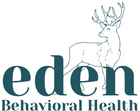Children With Autism: Signs, How To Help, Non Verbal
Autism in Toddlers, Early Signs, Working With Autistic Children, Autism Meaning, How To Explain Autism, Things To Know, Raising Child With Autism
What You'll Learn
Autism Symptoms, Early Intervention, What Does Autism Mean, Parenting A Child With Autism
Children With Autism
Autism Spectrum Disorder (ASD) is a developmental condition that affects communication, social interaction, and behavior. Because it’s called a “spectrum,” symptoms vary significantly from one child to another. Some children may have strong verbal skills but struggle with social cues, while others may be nonverbal yet excel in certain tasks or skills.
Key Point: Early identification and intervention can lead to better outcomes, helping children with ASD develop communication skills, coping strategies, and social connections.
Autism In Toddlers
Early Indicators: Signs of autism can sometimes be observed as early as 18 months (or even sooner).
Developmental Milestones: Delays or regressions in speech, lack of response to name, and limited eye contact can be potential indicators.
Observation Tips: Pay attention to how your toddler plays, responds to social cues (like smiling or waving), and shows interest in peers.
Actionable Tip
If you suspect any delays or unusual behaviors, consult your Child Mental Health Professional for a formal evaluation. Early screening tools—like the M-CHAT (Modified Checklist for Autism in Toddlers)—can help detect possible signs of ASD.
Early Signs
Communication Delays: Late babbling or speech development, limited gestures (like pointing), or loss of previously acquired words.
Social Interactions: Avoiding eye contact, not responding to name, seeming disinterested in others’ activities.
Repetitive Behaviors: Stimming (flapping hands, rocking, spinning objects), strict adherence to routines, intense interest in specific topics.
Sensory Sensitivities: Heightened or reduced sensitivity to sounds, textures, lights, or smells.
Actionable Tip
Keep a journal of your child’s behaviors, noting any consistent patterns or triggers. This record is invaluable for healthcare professionals during evaluations.
Autism Meaning
Autism Spectrum Disorder is characterized by:
Challenges in Social Communication: Difficulty understanding or using verbal and nonverbal communication (gestures, facial expressions, tone of voice).
Restricted, Repetitive Patterns of Behavior: Need for sameness, repetitive movements, specialized interests or routines.
Neurological Basis: Brain structure and function can differ in children with autism, influencing how they process information.
Remember: Autism is not an illness. It’s a neurodevelopmental condition that requires understanding, acceptance, and tailored support.
Non-Verbal Autism
“Nonverbal” can mean a child primarily communicates through methods other than spoken words. This might include gestures, sign language, Augmentative and Alternative Communication (AAC) devices, or picture exchange systems (PECS).
Communication Strategies: Some children may eventually develop spoken language, while others may use alternative communication tools throughout their lives.
Behavior as Communication: Understand that challenging behaviors can sometimes be a child’s way of expressing needs or frustrations when verbal communication is limited.
Actionable Tip
Work with a speech-language pathologist (SLP) specializing in AAC to identify the best communication methods for your nonverbal child.
How To Explain Autism
Use Simple Language: Tailor explanations to your child’s age and developmental level. For siblings or classmates, phrases like “They learn and talk in different ways” can be helpful.
Emphasize Differences, Not Deficits: Explain that everyone has strengths and challenges. Autism is just one way some people’s brains work.
Model Acceptance: Show empathy and understanding in your actions. Children often learn how to treat others by observing adult behavior.
Actionable Tip
If you’re discussing autism with other children (siblings, friends), use storybooks or short videos that portray autistic characters positively and accurately.
Things To Know About Autism
Wide Spectrum: No two children with autism have the exact same behaviors or abilities.
Potential Co-occurring Conditions: Children with ASD might also have ADHD, anxiety, sensory processing differences, or learning disabilities.
Adaptive Skills: Some children excel in specific areas (math, art, memory) and may need extra support in other areas (social skills, communication).
Myths & Misconceptions: Autism isn’t caused by parenting style or vaccines. It’s a complex interplay of genetic and environmental factors.
Actionable Tip
Stay updated with evidence-based research from reliable sources like the CDC or the Autism Society. Avoid misinformation by verifying any new treatment or intervention.
Raising A Child With Autism
Advocacy: Learn about your child’s educational rights (Individualized Education Program, or IEP) and engage in open communication with their school.
Self-Care for Parents: Caring for a child with autism can be rewarding yet stressful. Seek support groups, therapy, or respite care to maintain your well-being.
Celebrate Milestones: Focus on progress rather than comparisons. Small achievements—like using a new word or trying a new food—can be huge victories.
Actionable Tip
Build a support network—other parents, local autism organizations, online communities. Sharing experiences and strategies can lighten the emotional load and offer fresh insights.
